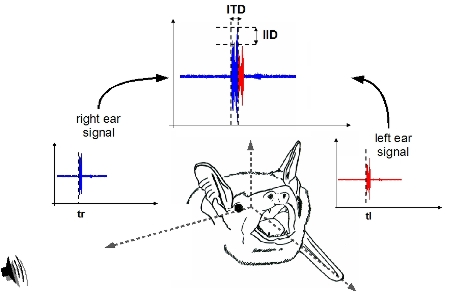

Thus far no echolocating bat has been found to hear significantly below 1.7 kHz, even though the ability to hear frequencies lower than that is nearly universal among non-chiropteran mammals, among which low frequency hearing limits range from 17 Hz to 3.6 kHz (e.g., Heffner et al., 2006 Heffner et al., 2001a). However, the only behavioral test of hearing in this species used narrow band noises and, while demonstrating that vampire bats have good sensitivity in the midrange of their audiogram, did not determine the entire frequency range of their hearing ( Gr öger and Wiegrebe, 2006). Physiological responses from the cochlea and midbrain of vampire bats and the appearance of their brainstem auditory nuclei suggest that they may have significantly better low-frequency hearing than other bats ( Kuwabara and Bhatnagar, 1999 Schmidt et al., 1991 Vernon and Peterson, 1966). Finally, it has been reported that they use passive hearing to locate prey and have the capacity to identify specific individuals by their breathing sounds ( Gröger and Wiegrebe, 2006 Schmidt 1988 Schmidt et al., 1991).Ĭommon vampire bats may also have atypical hearing in comparison to other bats. Vampire bats are also unusual in that they have infrared heat detectors in three pits surrounding their noseleaf that help them detect blood vessels near the surface ( Kurten and Schmidt, 1982).

They are extraordinarily agile on the ground and can take flight from a standing leap to escape the defensive reactions of their large prey-they are the chiropteran equivalent of harrier jets ( Greenhall and Schmidt, 1988). Unlike other bats, vampire bats spend considerable time on the ground and often approach prey from below, climbing up a leg to bite near the foot, or onto the back to bite other highly vascular areas.

Their digestive system is highly derived enabling them to feed off the blood of large mammals such as capybara, peccaries, tapir, and cattle hence they are an important pest of livestock and, occasionally, of humans. Their prey are more than four orders of magnitude larger than themselves. There is little that is not remarkable about vampire bats (e.g., Greenhall and Schmidt, 1988). Perhaps the most unusual lifestyle in Phyllostomidae is that of vampire bats, of which the Common vampire, Desmodus rotundus, is the most studied. These different diets entail different demands on echolocation, from hovering and echolocating in leaf clutter for fruit or nectar, to finding prey in open flight, to gleaning prey from a substrate ( Kalko and Condon, 1998) these in turn may exert different pressures on hearing that should become apparent in a more extensive sample of bats. We have previously reported on the hearing abilities of three species in this family (Short-tailed fruit bat, Jamaican fruit bat, and Greater spear-nosed bat), ranging in size from 18–110 g, and having different specializations for foraging -nectar, fruit, or insects and other mammals ( Heffner et al., 2003 Koay et al., 2002, 2003). It is a large family of New-World leaf-nosed bats with more than 150 species that range from the southwestern United States through Central and South America to Argentina ( Greenhall et al., 1983). The family, Phyllostomidae, offers such an opportunity. The presence of variation among evolutionarily closely related species allows us to explore differences in hearing that may be affected by lifestyle and enabled by differences in anatomy and physiology. Even within a single specialized order, such as bats, there are differences in hearing range and absolute sensitivity, passive sound localization acuity, and echolocation (e.g., Heffner et al., 2001b Jones and Teeling, 2006 Neuweiler, 2003). Despite a common inner ear design and organization of the central auditory system, mammals vary widely in their hearing abilities.


 0 kommentar(er)
0 kommentar(er)
